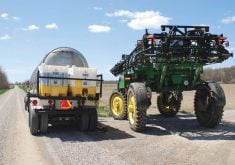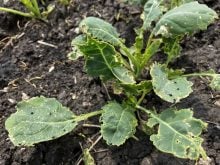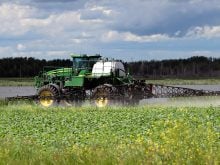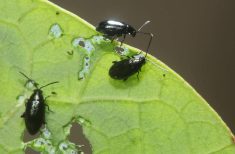A spray plane equipped with rotary fan atomizer nozzles can reduce drift and put more product on a crop while dramatically reducing water volume.
Until recently, aerial applicators with standard nozzles typically put down three to five gallons of water per acre.
However, applicators who equip their planes with Davidon Hi-Tek rotary fan atomizer nozzles can now reduce that to one or two gallons per acre.
This reduction translates into a big increase in the number of acres a pilot can cover between fill stops.
Read Also
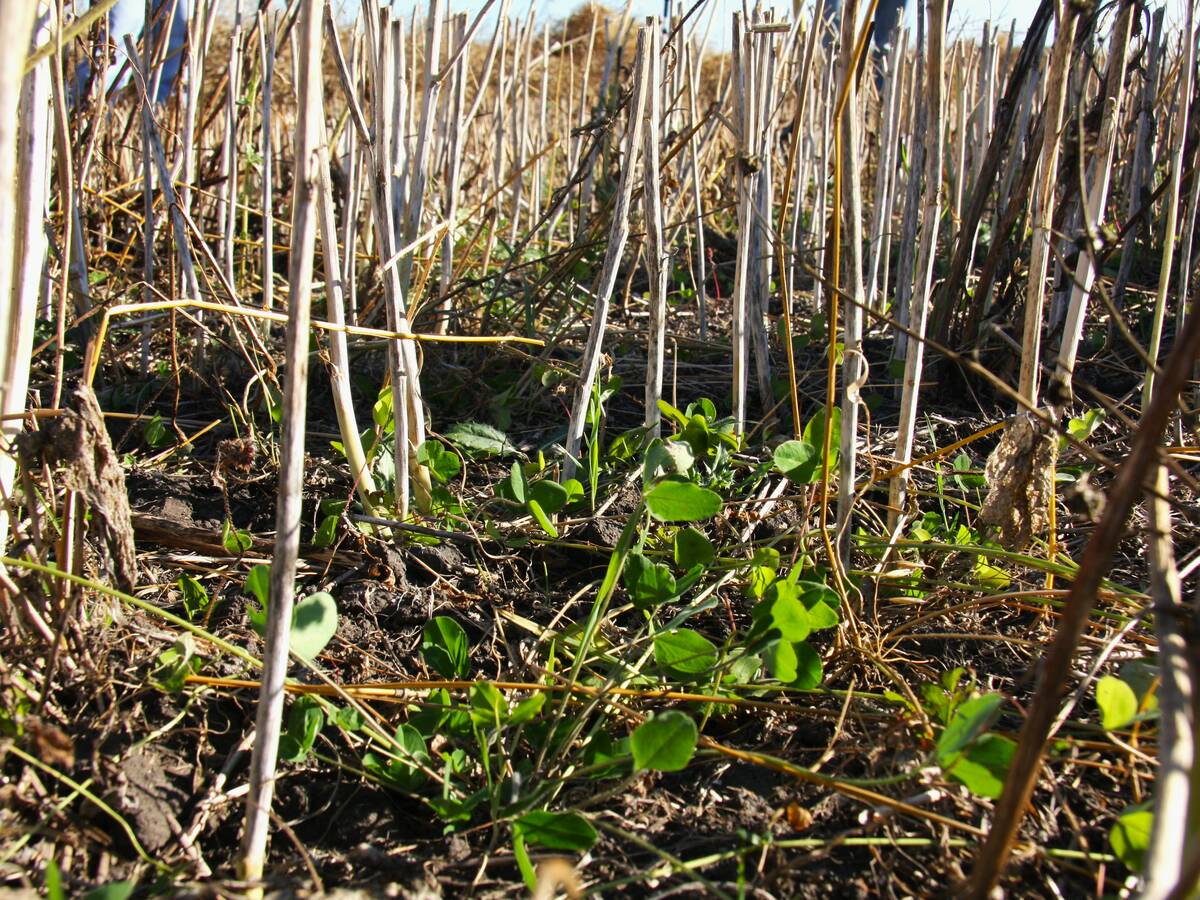
Saskatchewan project sees intercrop, cover crop benefit
An Indigenous-led Living Lab has been researching regenerative techniques is encouraging producers to consider incorporating intercrops and cover crops with their rotations.
For airplane owners, the $10,000 nozzle conversion also means fewer hours on the plane for every acre sprayed. For farmers, the rotary fan atomizer means better crop coverage because a high percentage of the droplets are 300 microns in size.
The Hi-Tek nozzle uses an airplane’s forward motion to drive a small six-blade fan, which blows a stream of air over a screen that’s saturated with crop protection chemical. The atomizing effect of the air flow over the screen turns the liquid into nearly uniform droplets of 300 microns.
Bob Hnatko of Western Air Spray in Westlock, Alta., said he originally installed the fan blade atomizer nozzles on his AirTractor but not the Weatherly. It was easy to see the difference in spray pattern coverage when the two planes were flying the same field, he added.
“We had both planes working at the same farm one day and my customer was watching us pretty closely. Before long, he came over and told me to park the Weatherly. He only wanted the plane with the atomizer nozzles.”
Hnatko said that kind of response is typical when producers see the uniform spray coverage landing on their crops, with little or no visible drift from fines. It’s especially obvious when a plane with atomizer nozzles is working near a plane with conventional nozzles.
He has since equipped all four of his spray planes with the Davidon atomizer nozzles.
It’s easy to spot a spray plane with atomizer nozzles. Instead of a wing-mounted boom with many small nozzles, an atomizer-equipped plane has only a small number of large nozzles. Hnatko’s Air Tractors have seven atomizers on each wing.
“We’ve had very few plugged nozzles compared to back when I ran standard nozzles. There’s literally no maintenance and no overhaul. We grease them once a year at the start of the season and that’s it. Once a year equals about 300 hours for us. They recommend more often, but once a year seems to be adequate,” he said.
“My oldest set of atomizers now has 900 hours and we’ve had no problems at all. And the droplet scan has been consistently the same all three years.”
He said he’s comfortable with the new nozzle technology at two gallons per acre, and he can go lower when conditions allow.
“I go as low as one gallon per acre with fungicides and insecticides, but that depends on temperature, humidity, wind and everything else. It all has to be just right. But even at two gallons, we’re half the normal water volume, so that means twice as many acres between fills,” he said.
“But that’s not a benefit the customer sees. The customer gets the benefit of better coverage. One of my regular customers always does yield data. Since I switched to atomizer nozzles three years ago, he says he’s getting better yields right across the board. Now, three years isn’t proof, that’s true. And maybe he would have gotten better yields anyway. But I think it does make a point about generally better spray coverage.”
The Davidon promotional literature says the atomizers have a low droplet spectrum variance with their average droplet size of 300 microns.
Gary Moffat of Specialized Spray Services in Lethbridge said that in the real world he’s found that Davidon droplet sizes range from 250 to 350 microns.
“Rotary atomizers aren’t new. They’ve been used in the forestry industry for years. They’re just now finding their way onto the wings of ag spray planes,” he said.
“The advantage of any kind of nozzle with a narrower droplet size spectrum isn’t only that you get more droplets of the correct size. More droplets in the target range has to mean that you’re also getting fewer large and fewer small droplets. I hear farmers saying that aerial applicators are switching to rotary atomizers just so they can cover more acres and make more money. The guys who say that don’t realize they’re getting a way better spray deposit on their crop.”
Moffat spent time at Texas A&M this past winter testing Davidon atomizers on different spray planes at different speeds. The goal was to find the best way to mount the nozzles on each type of plane to achieve the best performance.
“Davidon tells us their target is a 300 micron droplet. Getting that size depends on how we mount the atomizer and speed of airplane. Texas A&M is set up for doing that kind of work,” he said.
“What we’ve found it that the ultimate droplet for all conditions is between 250 and 350 microns. At that size, there’s not a lot of drift due to small fines and virtually no runoff due to larger droplets. And we can realistically put nearly all the spray within that range.”
Moffat said farmers are becoming more aware of the benefits of rotary atomizers. He could interest only three applicators in trying the nozzles when he started bringing them to Canada five years ago.
“This year so far, I’ve sold 15 or 20 sets. The demand has to start with the farmer. It starts when one farmer sees that his neighbour has better crops because of the rotary atomizer nozzles on his aerial applicator.”
For more information, contact Bob Hnatko at 780-349-1805 or www.westernairspray.com and Moffat at 403-330-9085 or sss@la.shockware.com.



